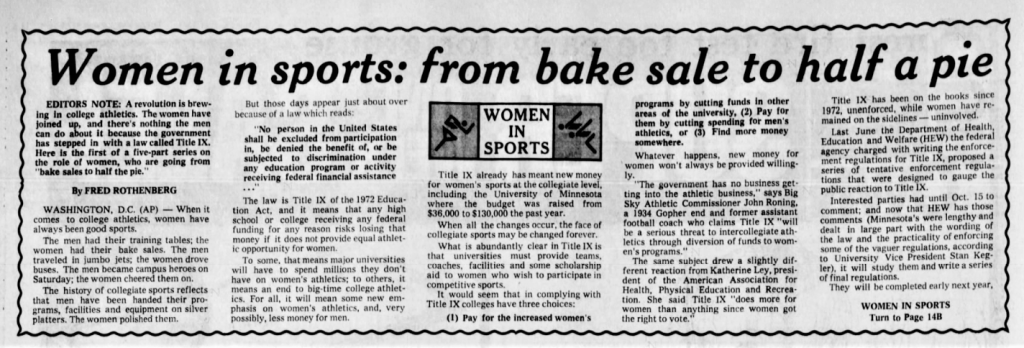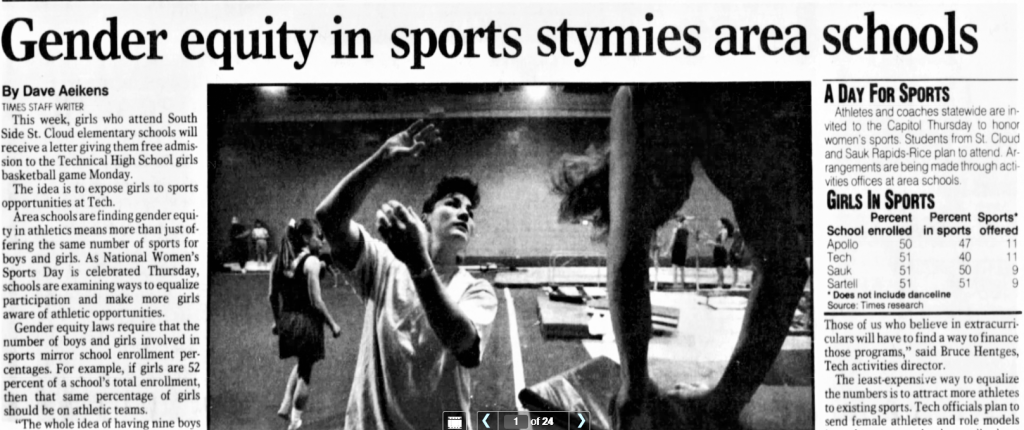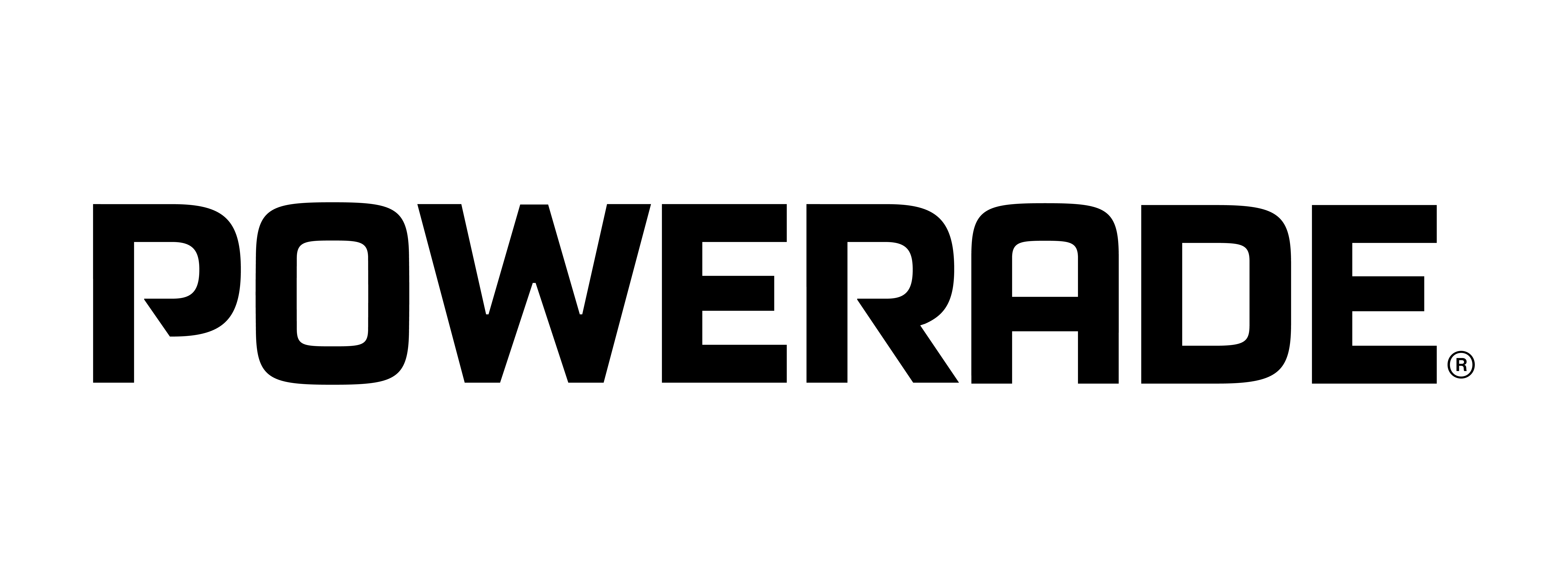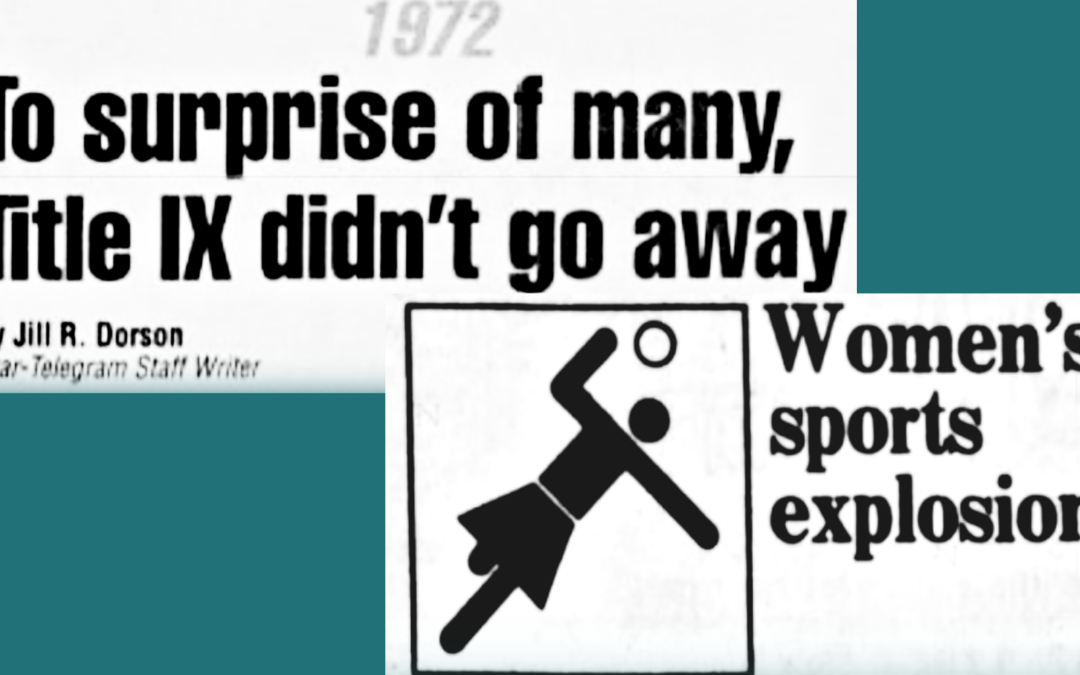Last Wednesday marked the 36th annual National Girls & Women in Sports Day. As we celebrate the accomplishments, influence, and leadership of female athletes, the progress of women’s sports over the last half century is as incredible as it is incomplete.
Title IX turns 50 this summer. Isn’t that something? Signed into law in 1972, Title IX bars federally funded education programs and activities from discriminating on the basis of sex. Its enactment tasked public schools with creating equitable opportunities for women to participate in sports, investing in scholarships for men and women proportional to their participation, and treating male and female student athletes equally. It’s a revolutionary policy that shaped gender equity in education and sports, and it’s younger than “Sesame Street”.


Social progress is often imagined as a gradual shift in the cultural consciousness over a long period of time. Title IX challenged this notion. By 1978, the same year that the law became mandatory, six times as many high school girls were participating in competitive sports compared to 1970. To date, female participation in sports has increased by 1057 percent at the high school level and 614 percent at the collegiate level since Title IX’s passage.


Title IX carved out a place for women’s sports in public schools. Not without its trials and tribulations, however. For instance, the NCAA filed an unsuccessful lawsuit against the legality of Title IX in 1976, attempting to exempt “revenue producing” sports from the policy’s authority. A 1990 Minnesota Department of Education survey showed that 65 percent of Minnesota high schools still weren’t in compliance with gender equity mandates. Fast forward to 2022, 90% of colleges still don’t offer athletic opportunities to female athletes proportional to their enrollment.



Needless to say, the fight for gender equality in sports has not been entirely peaches and cream, and the work is far from done. While Title IX opened doors for girls at the high school and collegiate level, professional opportunities for female athletes bear little resemblance to those presented to male athletes.
The wage gap between male and female professional sports is no secret; on average, WNBA players bring in 1.5% that of an NBA player’s salary. The $1,235,495 average salary of a PGA player eclipses the $48,993 that an LPGA player earns. In 2007 (pre-National Women’s Hockey League and Premier Hockey Federation), Minnesota Whitecaps players actually paid up to $1,000 each to play post-collegiate, competitive hockey, and that team included three Olympians. The PHF recently increased its salary cap to $750,000– a step in the right direction for women’s hockey, but a long way away from the NHL’s $81,500,000 cap.
What do we make of this? Does the sports industry truly struggle to forge a market for female athletes? With only 3.2% of all sports media coverage devoted to women’s sports, it’d be generous to say that sports media has even provided its consumers the opportunity to engage with women’s sports at the same level as men’s. Sports coverage triggers hype, fosters star athletes, and drives revenue. Without the added boost of sponsorships and TV-rights, the production value of women’s sports backslides.
Cheryl Cook, associate professor of American Studies and Women’s, Gender, and Sexuality Studies at Purdue University, said it best in the article “Why Aren’t Women’s Sports as Big as Men’s? Your Thoughts”: “Men’s sports are going to seem more exciting… They have higher production values, higher-quality coverage, and higher-quality commentary… When you watch women’s sports, and there are fewer camera angles, fewer cuts to shot, fewer instant replays, yeah, it’s going to seem to be a slower game, [and] it’s going to seem to be less exciting.”

Although women’s sports coverage airs less glamour shots than its male counterparts, female athletes are absolutely sensational. There’s whopping mass-market potential in women’s sports; women just need their share of the spotlight. That means fair game times, sufficient stadium sizes, quality facilities and equal air time. Title IX showed the rapid pace at which culture can shift. With media guidance, American audiences can support men and women’s athletics on a similar scale.
Title IX broke down barriers for girls’ entry into school sports, and we are a better country for it. The law established a space on the field, court, rink and track for girls and women; it cannot do the same for the private professional sports sphere. The disparities in salary and media coverage between men’s and women’s sports sets limits on how big young, aspiring female athletes can dream. It’s time for sports media to substantially invest in professional women’s sports. It’s time to give the space for girl athletes to dream bigger, beyond a college career.
And when they get there, a decent wage to boot.


